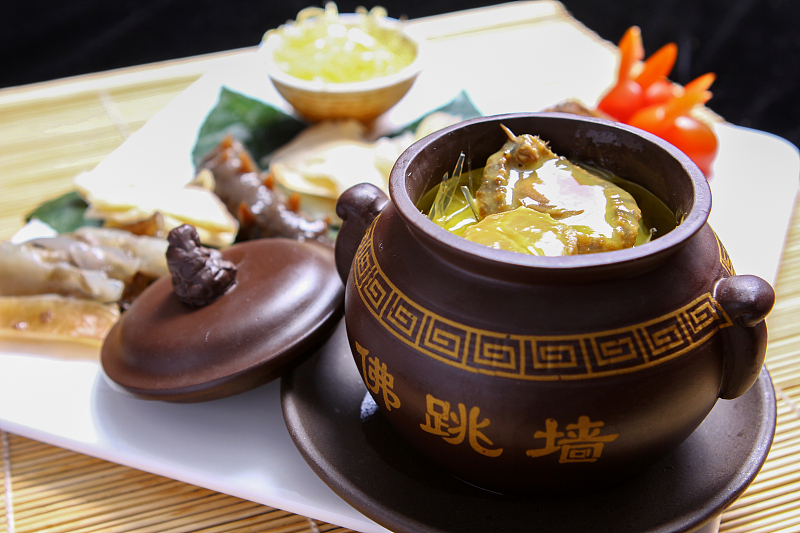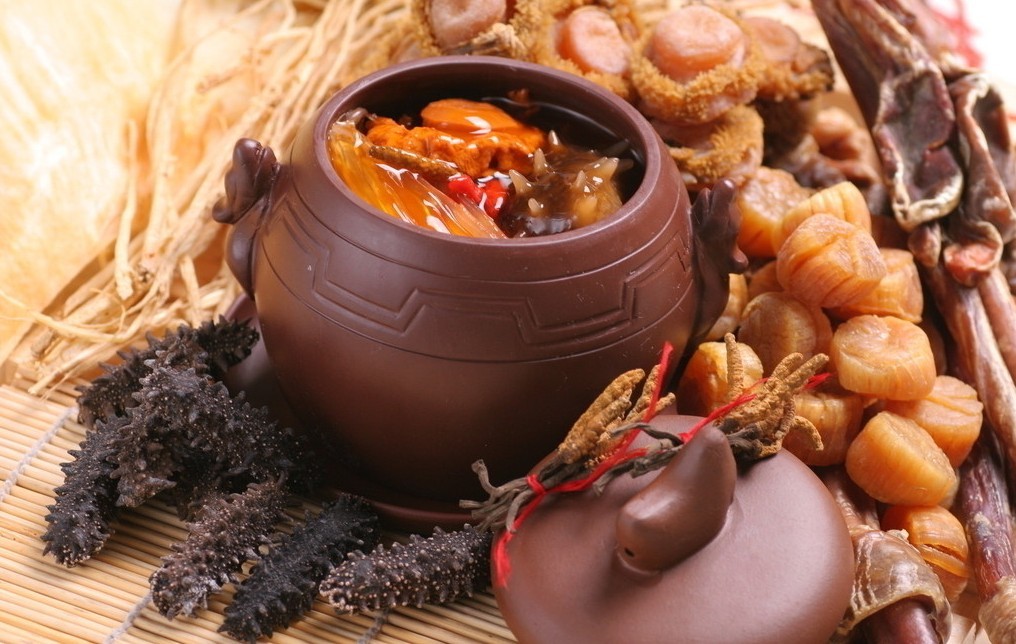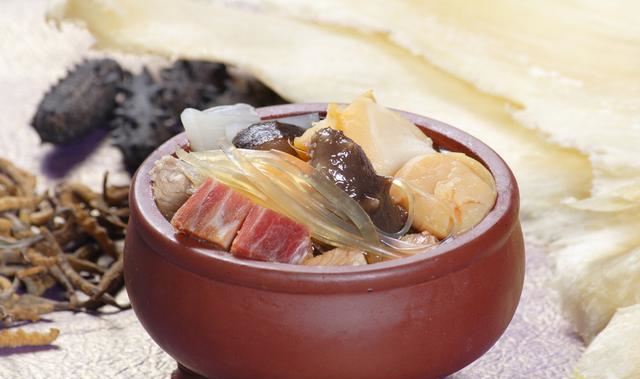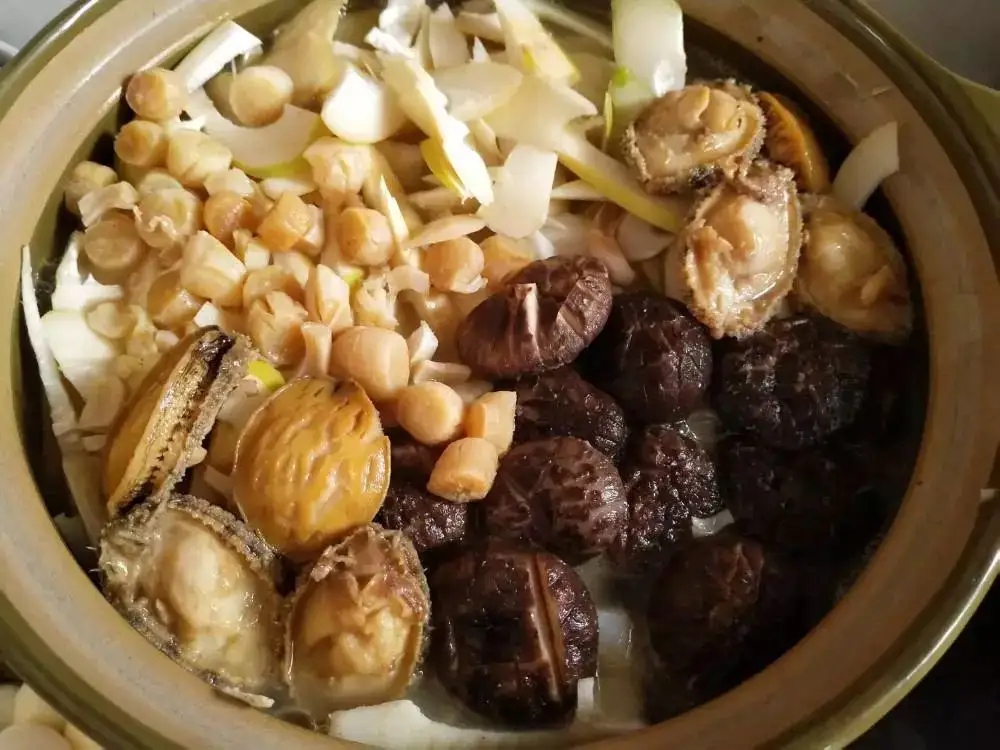Buddha Jumps Over the Wall is a famous traditional dish from Fujian cuisine, known for its rich flavors and variety of ingredients. It has been a symbol of Chinese culinary art for over a century and is renowned for its intricate preparation and luxurious ingredients. This article will explore the origins, ingredients, cooking process, and cultural significance of this iconic dish.
Origins and History
Buddha Jumps Over the Wall originated during the Qing Dynasty (1644–1912) and has an intriguing story behind its name. Legend has it that a monk, upon smelling the enticing aroma of this dish, could not resist jumping over the monastery wall to taste it, despite being forbidden from eating meat. This story reflects the allure of the dish and the exceptional fragrance it produces during cooking.

Initially, the dish was a home-cooked meal popular in the Fujian region. Over time, it evolved into a sophisticated delicacy, thanks to the efforts of skilled chefs who refined the recipe and introduced it to high-end banquets and celebrations.
Ingredients
One of the most remarkable aspects of Buddha Jumps Over the Wall is the extensive variety of premium ingredients used to create its distinctive taste. The dish typically includes:
1. Abalone: A prized seafood known for its delicate flavor and high nutritional value.
2. Sea Cucumber: Rich in collagen, it adds a unique texture and has health benefits.
3. Shiitake Mushrooms: These mushrooms contribute to the earthy flavor and aromatic profile of the dish.
4. Shark Fin: Traditionally used in many Chinese dishes, it adds a gelatinous texture to the broth.
5. Pigeon Eggs, Dried Scallops, and Fish Maw: These ingredients bring layers of taste and texture to the dish.
The dish also requires a well-prepared broth, often made from chicken and pork bones, which serves as the foundation for the flavorful stew. Each ingredient is carefully selected and prepared to ensure the dish’s rich, complex flavor.
Cooking Process
The preparation of Buddha Jumps Over the Wall is labor-intensive and involves several intricate steps:
1. Preparation of Ingredients: Dried ingredients, such as sea cucumber, abalone, and shiitake mushrooms, need to be soaked and softened ahead of time. Other ingredients like fish maw and shark fin are blanched to remove impurities.

2. Soup Base: A rich broth is made by simmering chicken, pork bones, and ham. This clear yet flavorful soup is essential to the final dish’s taste.
3. Slow Stewing: Once the ingredients are ready, they are placed in a traditional clay pot, along with the broth, and slow-cooked for several hours. The slow cooking method allows the flavors to blend perfectly and creates the signature fragrant aroma of the dish.
4. Serving: The final product is a visually stunning and flavorful stew, with tender ingredients and a rich, umami-filled broth. It is typically served in individual bowls, allowing diners to savor each ingredient.
Cultural Significance
Buddha Jumps Over the Wall is more than just a delicious meal; it embodies the sophistication of Chinese cuisine and the emphasis on balance, harmony, and the careful selection of ingredients. The dish is often served during important celebrations, such as weddings, New Year festivities, or official banquets, symbolizing prosperity, health, and longevity.

This dish also reflects the Fujian region's culinary style, which is known for its ability to combine the bounty of both land and sea. The blending of rich proteins from the ocean with earthy flavors from mushrooms and meat-based broths exemplifies the holistic approach to food in Chinese culture—where taste, nutrition, and presentation are equally important.
In modern times, Buddha Jumps Over the Wall remains a symbol of opulence and craftsmanship in cooking. While it is considered a delicacy, the dish is also a representation of the ingenuity and resourcefulness of Chinese chefs, who have adapted and perfected the recipe over generations.

Conclusion
Buddha Jumps Over the Wall is a remarkable dish that showcases the complexity, richness, and depth of Chinese culinary traditions. With its combination of premium ingredients, meticulous preparation, and cultural symbolism, this dish has earned its place as one of the most celebrated and treasured items in Chinese cuisine. Whether for its tantalizing flavor or the historical and cultural significance it carries, Buddha Jumps Over the Wall continues to be a testament to the artistry and heritage of Chinese food.



